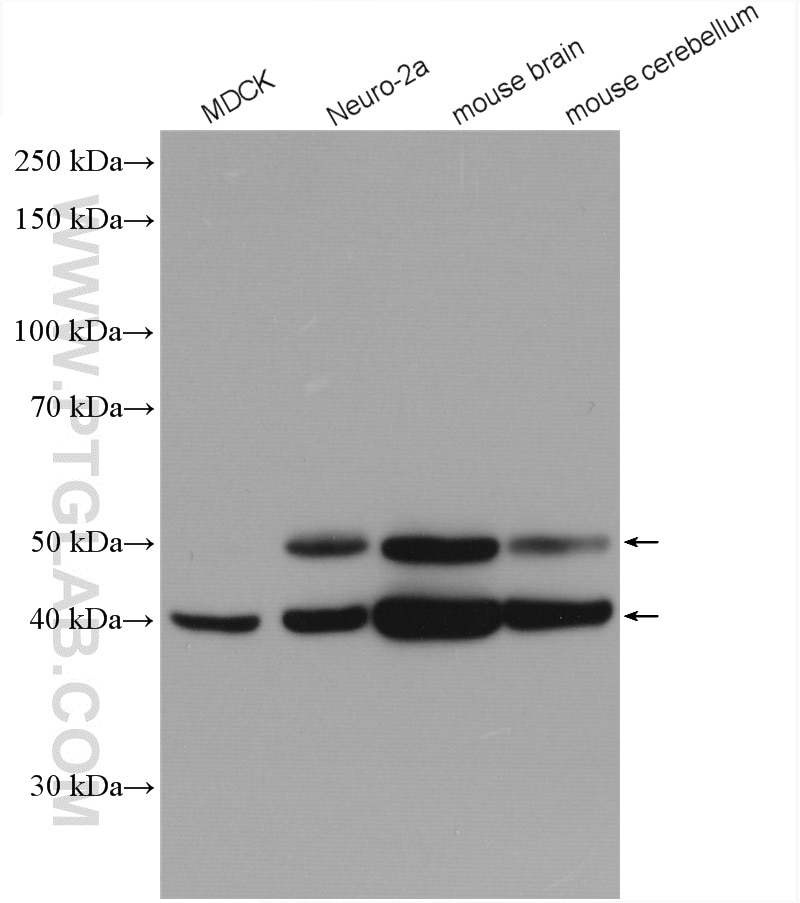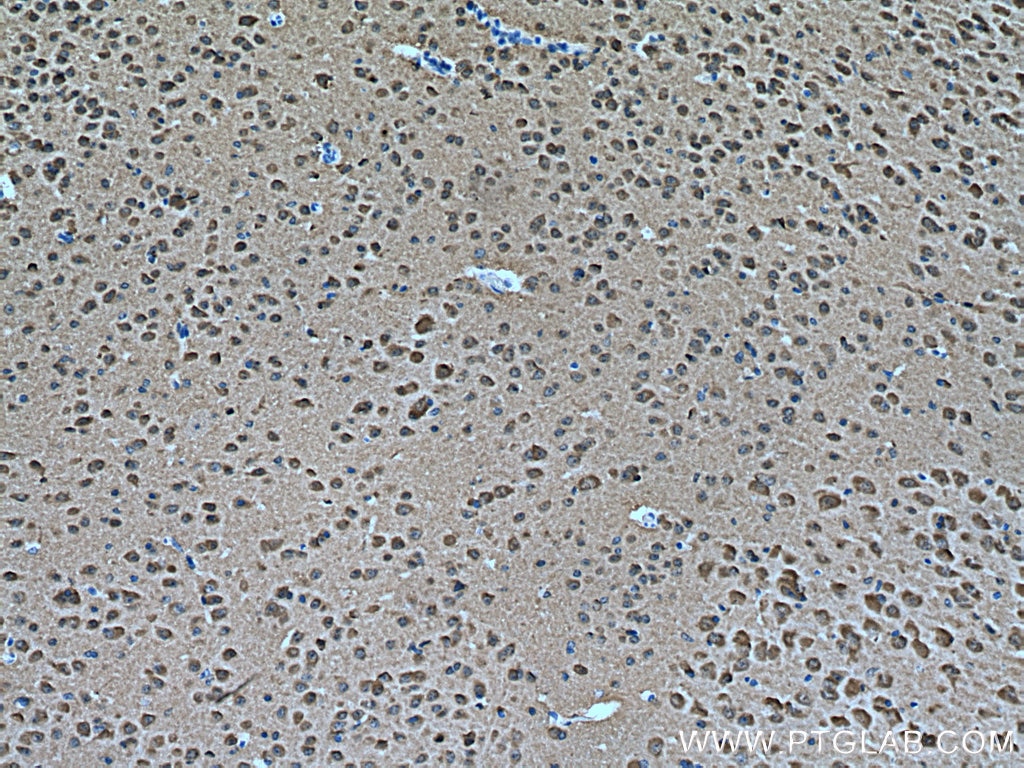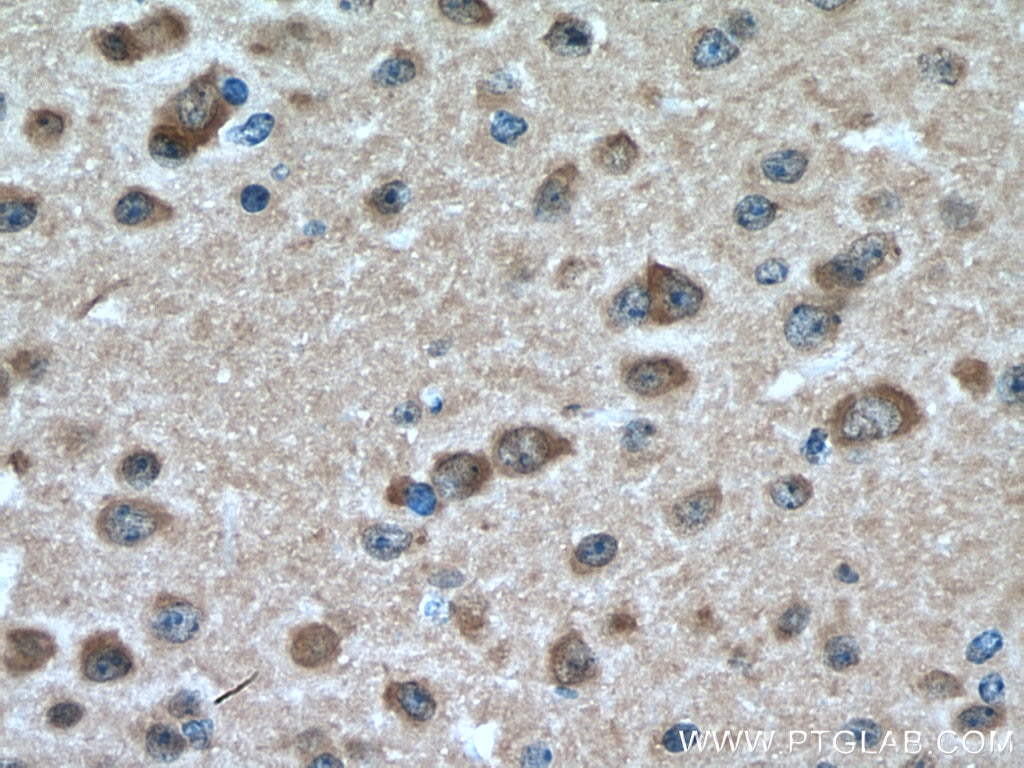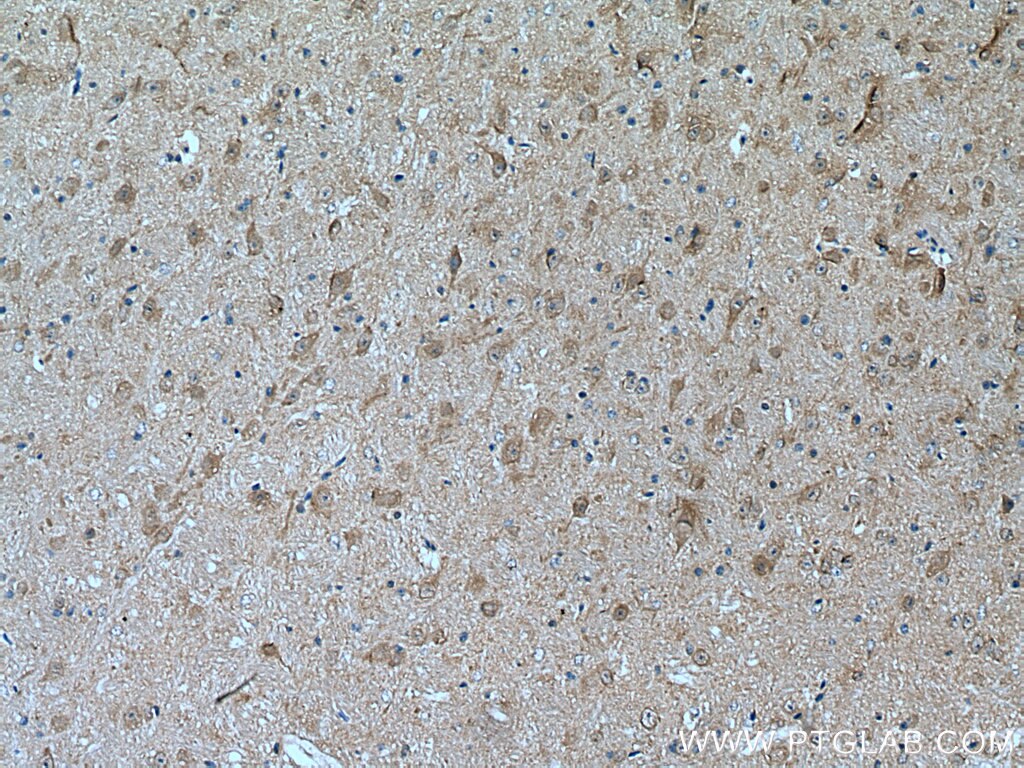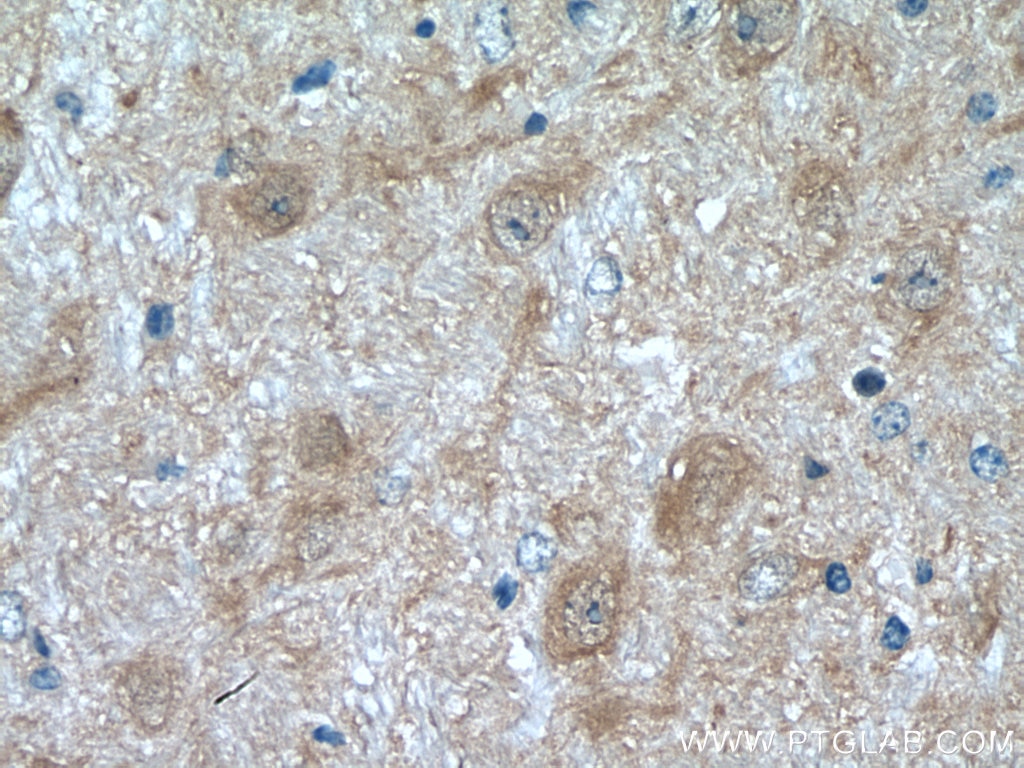Validation Data Gallery
Tested Applications
| Positive WB detected in | Neuro-2a cells, MDCK cells, mouse brain tissue, mouse cerebellum tissue |
| Positive IHC detected in | mouse brain tissue, mouse cerebellum tissue Note: suggested antigen retrieval with TE buffer pH 9.0; (*) Alternatively, antigen retrieval may be performed with citrate buffer pH 6.0 |
Recommended dilution
| Application | Dilution |
|---|---|
| Western Blot (WB) | WB : 1:1000-1:4000 |
| Immunohistochemistry (IHC) | IHC : 1:50-1:500 |
| It is recommended that this reagent should be titrated in each testing system to obtain optimal results. | |
| Sample-dependent, Check data in validation data gallery. | |
Published Applications
| WB | See 5 publications below |
Product Information
28007-1-AP targets JNK in WB, IHC, ELISA applications and shows reactivity with Human, Mouse, canine samples.
| Tested Reactivity | Human, Mouse, canine |
| Cited Reactivity | human, mouse, rat |
| Host / Isotype | Rabbit / IgG |
| Class | Polyclonal |
| Type | Antibody |
| Immunogen |
CatNo: Ag27823 Product name: Recombinant human MAPK10 protein Source: e coli.-derived, PGEX-4T Tag: GST Domain: 271-408 aa of BC065516 Sequence: QWNKVIEQLGTPCPEFMKKLQPTVRNYVENRPKYAGLTFPKLFPDSLFPADSEHNKLKASQARDLLSKMLVIDPAKRISVDDALQHPYINVWYDPAEVEAPPPQIYDKQLDEREHTIEEWKELIYKEVMNSEEKTKNG 相同性解析による交差性が予測される生物種 |
| Full Name | mitogen-activated protein kinase 10 |
| Calculated molecular weight | 464 aa, 53 kDa |
| Observed molecular weight | 45-48 kDa, 54-57 kDa |
| GenBank accession number | BC065516 |
| Gene Symbol | JNK3 |
| Gene ID (NCBI) | 5602 |
| RRID | AB_2881035 |
| Conjugate | Unconjugated |
| Form | |
| Form | Liquid |
| Purification Method | Antigen affinity purification |
| UNIPROT ID | P53779 |
| Storage Buffer | PBS with 0.02% sodium azide and 50% glycerol{{ptg:BufferTemp}}7.3 |
| Storage Conditions | Store at -20°C. Stable for one year after shipment. Aliquoting is unnecessary for -20oC storage. |
Background Information
JNK, also named MAPK10 (mitogen-activated protein kinase 10), belongs to MAP kinase family. MAP kinases act as integration points for multiple biochemical signals, and thus are involved in a wide variety of cellular processes, such as proliferation, differentiation, transcription regulation and development. This kinase is mainly expressed in a subset of neurons in the nervous system, and is activated by threonine and tyrosine phosphorylation. JNK has 3 isoforms of 48-53 kDa.
Protocols
| Product Specific Protocols | |
|---|---|
| IHC protocol for JNK antibody 28007-1-AP | Download protocol |
| WB protocol for JNK antibody 28007-1-AP | Download protocol |
| Standard Protocols | |
|---|---|
| Click here to view our Standard Protocols |
Publications
| Species | Application | Title |
|---|---|---|
Sci Total Environ Exploring potential targets and mechanisms of renal tissue damage caused by N-(1,3-dimethylbutyl)-N'-phenyl-p-phenylenediamine quinone (6-PPDQ) through network toxicology and animal experiments: A case of chronic kidney disease | ||
Int J Biol Macromol VSIG4 inhibits RANKL-induced osteoclastogenesis by enhancing Nrf2-dependent antioxidant response against reactive oxygen species production | ||
Int Immunopharmacol Molecular mechanisms and potential targets of lycopene for alleviating renal ischemia-reperfusion injury revealed by network pharmacology and animal experiments | ||
Nat Commun SARS-CoV-2 N protein-induced Dicer, XPO5, SRSF3, and hnRNPA3 downregulation causes pneumonia | ||
Front Immunol Identification of ALDH2 as a novel target for the treatment of acute kidney injury in kidney transplantation based on WGCNA and machine learning algorithms and exploration of its potential mechanism of action using animal experiments |

